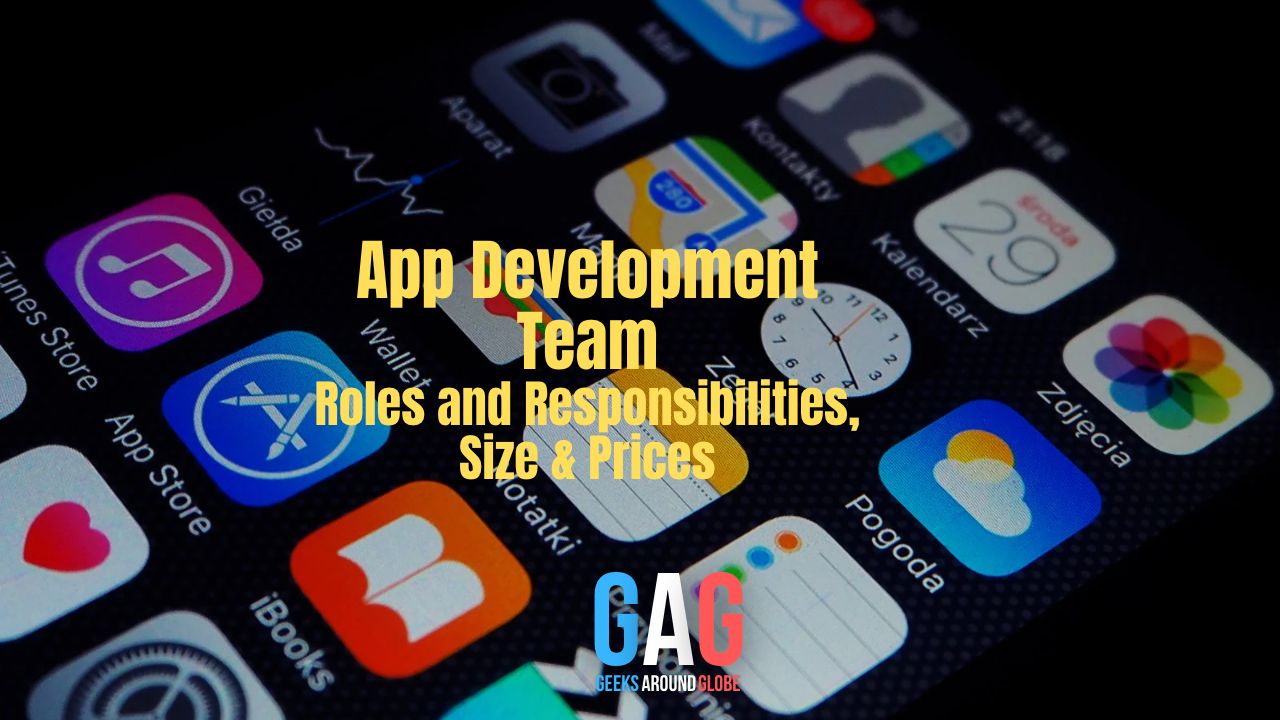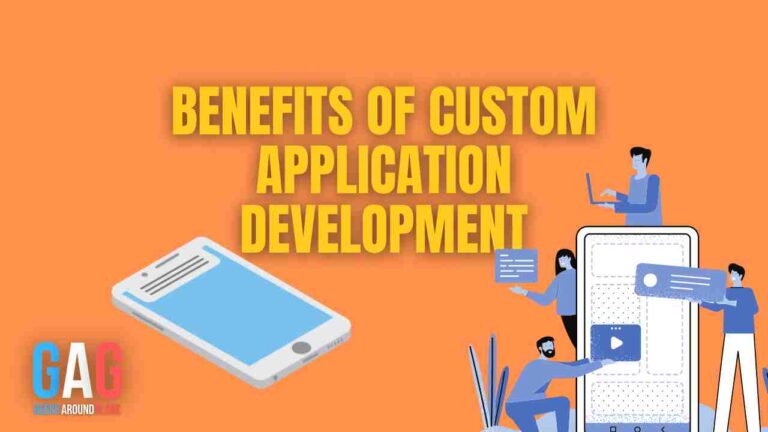Want to develop a mobile application? You’ll very certainly need the assistance of a group of experts to build it. Surf has built mobile applications for over ten years, so we have sufficient knowledge of an application development team.
Putting together a team to work on a new project can be challenging; many factors must be considered, and a poorly structured team can sabotage the entire development process. This article will give you an overview of the structure of an application development team, the number and type of specialists needed, and the budget you’ll require so you can quickly get started with developing your app.
Who Do You Need On Board?
The app’s complexity mainly determines the size and composition of the team. However, some mobile application development team roles are necessary for any small-scale project.
Developers
Developers write the code and construct the applications’ architecture — each function and screen.
To build native Android and iOS applications, you’ll require developers to write in Swift and Kotlin. If you wish to develop a multiplatform app (Ionic, React Native, Flutter), you’ll require developers proficient with these coding languages and platforms. Two developers are sufficient for a small project. You’ll also require a Backend Developer to handle databases if your app stores data or processes payments.
QA Engineer
The Quality Assurance Engineer ensures that the app’s final version retains a high-quality level.
This team member reviews all requirements and technical papers and automated and manual app testing and bug tracking. Depending on the development technology used, QA engineers require an extensive understanding of testing technologies such as TestComplete, Robotium, Selenium, etc.
Project manager
PM is the development team leader who handles all the coordination and communication with the team members and clients. He’s also in charge of app development, ensuring that the project remains on budget, fulfills deadlines, and satisfies the customer’s needs.
A project manager must be a proactive leader with good soft skills to generate transparent and efficient communication within the team, other departments, and customers. Any mobile app development project manager should be familiar with the agile management approach, which emphasizes client and developer cooperation, flexible reaction to changes, and expertise with management software such as Confluence, TeamGantt, and Asana.
UX/UI Designer
The designers are responsible for the app’s visual design, including its appearance and performance. They create wireframes for the future application using UI element layouts and image prototypes, and their work directly influences how simple and fun the app’s user experience would be.
UI/UX designers require excellent communication skills and analytical abilities, which are helpful for UX research such as surveys for users and the testing phase. Webflow, Sketch, Balsamiq, Proto.io, and Axure, Envision Studio are the most prominent examples among these experts.
Stages of App Development
Any mobile application development process may be loosely divided into four parts. Each step involves various team members, and after each one, you’ll have a concrete outcome in the shape of an application prototype of a complete product.
Discovery stage
The product manager is supposed to sit down with the business analyst (if any) and client during the initial planning process to study the market and identify the app’s intended audience, objectives, and functions. By designing screen mockups, UI wireframes, and process flows, the UI/UX designer aids in visualizing the concept. Finally, the team is shown a low-fi prototype of the app that focuses on essential functionalities but lacks content and design.
UI design stage
You may begin researching with focus groups as soon as you have a low-fidelity prototype, gradually establishing the ultimate design. The team may refine the app’s concept and build a complete user experience based on the input. Developers and QA engineers get increasingly involved during the development process. You’ll have an interactive prototype with high-fidelity at the end of this stage, in which you’ll show testers how useful each feature & the user flows are.
Development stage
Developers become significant participants on the pitch at this phase as they program each app element. After this phase, you’ll get a minimum viable product (MVP) – a working mobile app with restricted features compared to the original plan.
Test & Improvement stage
Your team refines every app component by collecting and evaluating data from the application testers: redesigning elements and displays, fixing problems, improving integrations, and more. Developers and QA engineers are primarily involved in improving the app’s code, conducting tests, and repairing issues. This stage ends with a fully working app ready to be released publicly.
App development team size
Several factors determine the number of people you’ll require onboard, and the most important of them are listed below.
Supported platforms
As native applications are built-in distinct languages (Kotlin for Android and Swift for iOS) and demand slightly different skills, you’ll need many developers if you’re developing them for both platforms. That is why using a multiplatform framework (Flutter, Ionic, React Native) to create an app can be a preferable choice. There is just one piece of code shared across both platforms, requiring only one or two developers and saving money.
App’s complexity
Apps with many features & integrations, like digital exchanges and social networks, need extensive development and problem fixing. For instance, developing a messaging feature takes more than 160 hours — a month of full-time labor — therefore, you’ll almost certainly need additional engineers working on similar projects simultaneously.
In addition, tablet compatibility may necessitate a fundamental redesign of the app’s interfaces, which can be a daunting effort for a team of 1–2 UX/UI designers. Increase the number of QA engineers for projects with extensive security standards, such as banking applications, to cover all aspects of audits and testing.
Some projects might require more foundation throughout the research and prototyping stages, necessitating hiring more business designers & analysts.
Deadlines
Even though each project is different, the following are typical timelines for developing an application with a team that comprises a project manager, two developers (including the backend), a UX/UI designer, and a QA engineer:
- 2 to 4 months are needed for a simple interface (with only a few functions and screens and a minimalist design);
- 6 to 10 months for medium-complexity apps (more screens, features, and graphic elements).
- 8 or more months for complicated projects requiring payment service connections, hardware, interactive media, or a large backend. For this case, recruiting more engineers and designers for your team will help you get your product to market faster.
Read our dedicated post to obtain a clear image of the timeline needed to construct your app.
Budget size
It’s critical to customize the team configuration to the anticipated problems and duties. While employing too few experts or solely primary and intermediate-level developers may obstruct and stall the development of a challenging project, recruiting a lot of experts on a comparatively basic project can increase the costs without improving quality or pace. A thorough assessment of the application’s deployment is beneficial in defining the appropriate size of a team. The development procedure may proceed normally without members continually overburdened and an unduly strained financial plan.
Team member salaries
Salaries for app developers are determined by their credentials, talents, and, most importantly, their locality. Software engineers in the United Kingdom, for example, earn roughly $60,000 per year, but professionals having the same competence in Eastern European nations (for example, Russia and Ukraine) rake in $25-30,000 annually.
If your organization is headquartered in the United States, Western Europe, or Australia, employing an application development team in another country makes sense to save money. In this in-depth analysis of the expense of recruiting mobile application developers, learn more about the factors influencing rates.
Ways to Hire Team Members
Discovering talents may be done in various ways, both online & offline. Ultimately, money and timescale play a significant role in determining the best technique. More information about where to employ developers may be found in a separate post. Let’s take a closer look at the most common methods for acquiring talent.
Recruitment Agency
Outsourcing the entire process to any headhunting firm can be expensive and straightforward at the same time. The simplest and most costly option is outsourcing the entire process to a headhunting firm.
The agency manages the whole hiring process, ensuring that only the most qualified individuals can interview with the company. However, the agency’s commission can be as much as twenty-five percent of the worker’s yearly income, and the hiring process can take up to four weeks.
Job Board
Employers who wish to be in complete control of the hiring procedure, from pre-screening individuals to arranging interviews, could post job offers on online job boards as it is very inexpensive. Several online job platforms, such as LinkedIn Jobs or Indeed, and remote-only platforms (WeWorkRemotely, Remotive.io), along with more precise services, such as Dribbble (UI/UX designers), DevTeam.Space (software developers), Dice (tech talent), and plenty of others.
Referrals
It’s worth inquiring about your professional network to get reputable experts to join your team. You’ll obtain prospects with an established track record in this manner. However, if you just stepped into the professional field and didn’t know many individuals, the procedure may take longer.
Freelance Networks
For short-term tasks, recruiting freelancers is an excellent option: you’re not bound to retain employees on board during the projects, and several freelancers are working on numerous projects at once, providing affordable prices. Start looking for freelancers on sites like UpStack, Fiverr, Upwork, YouTeam, etc.
Developers Forums
Websites like Indiehackers, GitHub, and Stack Overflow, which are famous among developers, can also assist you in recruiting developers for your application development team. This talent acquisition method is free of cost or relatively inexpensive, and your job posting will be viewed by a highly focused community of proactive developers. You will, however, need to conduct the entire recruitment process on your own, just as you would with conventional job boards.
Social Media
Many individuals nowadays, particularly in the IT business, get employed using social media platforms such as LinkedIn, Instagram, Twitter, Facebook, etc. Using social media platforms is beneficial only if your company is popular in the industry. However, this strategy doesn’t guarantee the quality of an applicant’s application development. Positions with a lot of social exposure, on the other hand, can be occupied in a short amount of time.
To sum things up
Establishing an application development team necessitates study and strategy. Analyze your project’s needs carefully and assess their complexity. Don’t employ many people and exceed your budget, and don’t recruit too few people as it will result in a long and challenging development process.
Aside from recruiting freelancers or an internal team, pass the project to an established team of specialists via a development firm. This method provides a lot of benefits concerning cost and management. Check out our recruiting app developers’ advice for more information on finding the right people to do your project.







